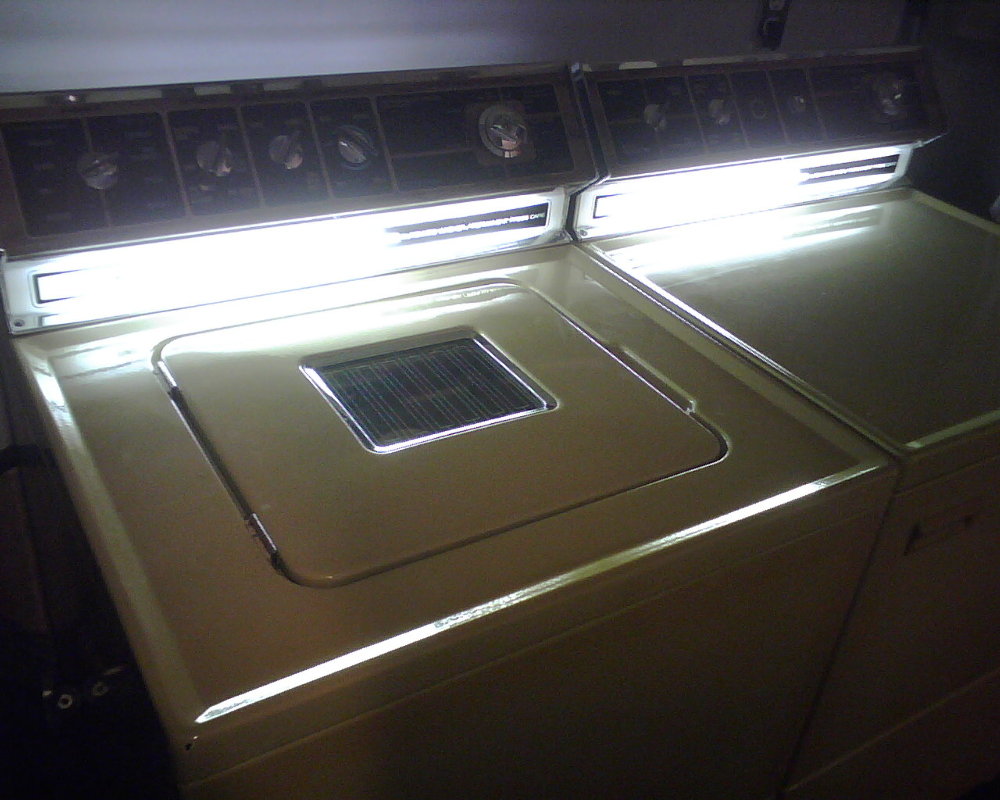|
Thread Number: 35673
Washers and Dryers of ALL AGES!! |
[Down to Last] |

|
Post# 532209 , Reply# 3 7/22/2011 at 16:58 (4,660 days old) by goatfarmer  (South Bend, home of Champions) (South Bend, home of Champions) |
||
 | ||
Post# 532224 , Reply# 4 7/22/2011 at 18:45 (4,660 days old) by combo52  (50 Year Repair Tech Beltsville,Md) (50 Year Repair Tech Beltsville,Md) |
||
WASHER AND DRYER STYLES Automatic washers and dryers [ like automobiles ] went through an annual restyling almost every year from the early 1950s- most of the 1970s. Maytag [ like Volkswagen same poor performance also] probably did the least restyling over this time period. Manufactures started to come to thier senses as the energy crisis evolved in the 1970s and now as with automobiles the annual restyle is pretty much a thing of the past. However all this restyling and competition to be the newest and best appliance makes these three decades very exciting to us appliance collectors. Feel free to get in touch with me if you would like more information about this period of appliance design and what has happened in the following decades. | ||
| Post# 532309 , Reply# 5 7/23/2011 at 00:57 (4,660 days old) by StrongEnough78 (California) | ||
|
| ||
| Post# 532310 , Reply# 6 7/23/2011 at 01:01 (4,660 days old) by StrongEnough78 (California) | ||
|
Ok here's a link to a previous thread of Robert, our Webmaster, his control towers. They're both washers, one a Unimatic the other the Pulsamatic. I know there are pics of a CT washer dryer set somewhere. I'll keep looking.
CLICK HERE TO GO TO StrongEnough78's LINK | ||
| Post# 532311 , Reply# 7 7/23/2011 at 01:11 (4,660 days old) by arbilab (Ft Worth TX (Ridglea)) | ||

Cynical but true I think:
The further we got from post-WW2 engineering, the more emphasis shifted from performance and reliability towards cheapness of manufacture. Major brands stuck with the same 'works' and restyled the cabinet and controls, adding cycles, speeds, temps. But nothing really changed until the 'energy star' thing happened. When was that, the 90s? At which time cheapness of manufacture was still paramount, but the 'works' also got a redesign. Sometimes successful, sometimes not, in terms of longterm usability. Like the early electronic control modules with chronic failures and 5-year mechanics (seals and bearings) when we were accustomed to 15 years. | ||
| Post# 532696 , Reply# 9 7/25/2011 at 07:05 (4,658 days old) by ericarose () | ||
|
thanks! Thanks everyone! I'm finding some really nice pictures of older models and its neat to see how the design of washers and dryers have changed over time. | ||
| Post# 532697 , Reply# 10 7/25/2011 at 07:14 (4,658 days old) by ericarose () | ||
|
Photo Album The other day I came across a place on this website that had people's photo albums with photos of washers and dryers. I can't seem to find it again. Does anyone know what I am talking about? | ||
| Post# 532699 , Reply# 11 7/25/2011 at 07:19 (4,658 days old) by ericarose () | ||
|
nevermind!! Nevermind....found them! | ||
| Post# 532767 , Reply# 13 7/25/2011 at 14:48 (4,657 days old) by PhilR (Quebec Canada) | ||
 And you can also look for ads on Google books. Just type the year range, select "full view" and type the different manufacturer names. You can zoom ads to see many details.
And I'd suggest having a look at other brands than Maytag, Whirlpool/Kenmore and GE too as some brands had unique designs which stopped being produced before the eighties. Some brands like Kelvinator, Philco and GM Frigidaire had a unique washing action, quite different from anything that's available today.
If you're not familiar with them, have a look on YouTube, some members of this forum sent videos of their washers in action.
For example, my GM Frigidaire washers: CLICK HERE TO GO TO PhilR's LINK 
| ||

 Comes to the Rescue!
Comes to the Rescue!